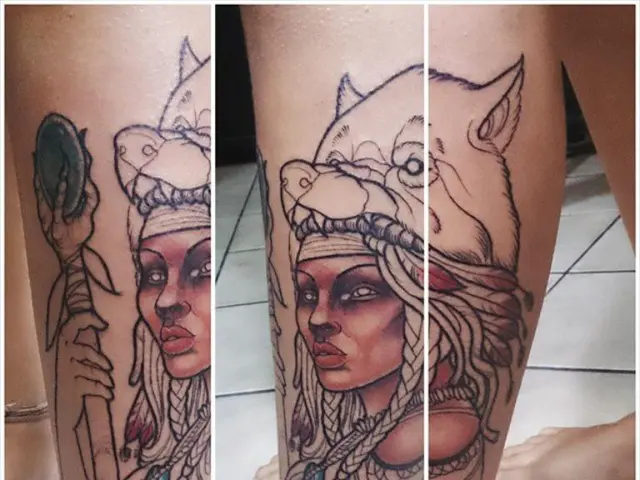5 Creative Art Therapy Techniques for Addressing Anxious Attachment Patterns
Struggling with an anxious attachment style can be a real hot mess, but fear not! We're about to dive into some badass art therapy exercises designed specifically for those struggling with this pesky issue. So grab your art supplies and get ready to channel your inner emotional turmoil into some seriously therapeutic creations!
Containment Drawing: Tame Your Emotional Beast
Got anxiety like a raging bull kicking down the gates? This exercise is here to help you tame that emotional beast and get a handle on the chaos. Draw a container, like a box or vase, and fill it with everything that represents your anxious emotions. Externalizing your feelings in this way can help you process them and understand them better. No more feeling overwhelmed, just grab your crayons and let it all out!
Emotional Landscape: Pay a Visit to Your Feelings
Take a vivid journey through your emotional world with this exercise. Draw a landscape that reflects your emotional rollercoaster ride. Bring on the mountains for the challenges, rivers for the emotional flow, or even a big, dry desert to represent isolation. Talking about your creations can help you gain insight into the root causes of your attachment issues.
Relationship Mapping: Plot your Damned Love Life
Want to get a better understanding of your tangled web of relationships? Crack open a map and draw yourself and all your partners, along with any significant others. Use colors, symbols, or images to represent emotions and interactions. Discover patterns and areas in your relationships that trigger anxiety and work on improving them like a boss.
Self-Portrait Evolution: Watch Yourself Grow
This exercise is all about self-reflection and personal growth. Create a series of self-portraits over time. Each portrait should reflect how you perceive yourself and your relationships at different stages. By following your emotional journey through these portraits, you can gain a deeper understanding of your attachment style and how it has evolved.
Machine for Change: Design Your Own Anxiety-Busting Tool
Ever had those moments when you wished you had a magical gadget to help you manage your attachment anxiety? Wish no more! Create a machine that can help you tackle those pesky insecurities once and for all. Get creative with the features and talk about how it represents your personal strategies for change.
For all you perfectionists out there, these exercises can be combined with mindfulness practices and interpersonal skills development to ensure you're set on the path to healing your anxious attachment style. So grab your art supplies and let the transformation begin!
Sources:
[1] American Art Therapy Association. (n.d.). Art Therapy Exercises & Activities. Retrieved February 15, 2023, from https://www.arttherapy.org/practice/aboutarttherapy/art-therapy-exercises
[4] Johnson, S. M. (2008). Attachment theory, psychoanalytic developmental psychology, and the therapeutic relationship. Norton.
[5] Wheeler, L. Moyer, T. (2012, February). Art Therapy for Anxiety: A Review of the Literature (2003-2011) [Abstract]. Journal of Psychosocial Nursing and Mental Health Services, 50(3), 18-29. doi: 10.3928/02793695-20120301-03
- The containment drawing exercise helps individuals tame their emotional beast by drawing a container and filling it with representations of anxious emotions, promoting better understanding and reducing feelings of overwhelm.
- The emotional landscape exercise allows individuals to explore their emotional world through art, offering insight into the root causes of anxious attachment issues by depicting a personalized emotional rollercoaster.
- Relationship mapping provides a visual representation of one's tangled web of relationships, enabling individuals to identify patterns and areas triggering anxiety, fostering improvement in interpersonal interactions.
- The self-portrait evolution exercise encourages self-reflection and personal growth, revealing the evolution of an individual's attachment style and understanding over time through a series of self-portraits.
- By designing a machine for change, individuals can personify their personal strategies for managing anxious attachment issues, furthering the exploration of coping mechanisms and emotional growth.
- Incorporating mindfulness practices and interpersonal skills development alongside art therapy exercises strengthens the effectiveness of healing anxious attachment styles, catering to the needs of perfectionists on their transformative journey.
- Anxious attachment issues can be explored and addressed through a combination of art therapy exercises, improving communication, connections, and relationships, leading to a healthier and more fulfilling lifestyle.
- The American Art Therapy Association offers a wealth of resources and art therapy exercises designed to support individuals struggling with anxious attachment issues, as highlighted in their comprehensive guide.
- Embracing art therapy as a tool for mental health, fitness, and exercise, individuals can bolster their mental wellbeing, fostering emotional resilience and personal growth.
- Recent studies, such as those by Johnson (2008) and Wheeler et al. (2012), confirm the efficacy of art therapy in managing anxiety, further validating its place in the field of education, self-development, and mental health.







